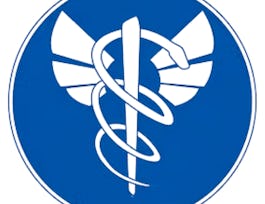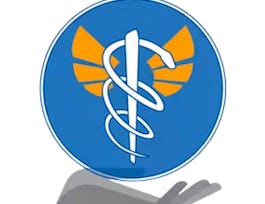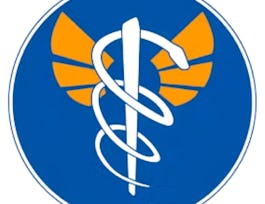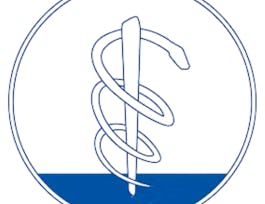Welcome to Trauma Emergencies and Care. In this course, you will learn about some of the mechanics and physics of trauma on the human body, and how this can cause injury. You will continue to expand your new vocabulary with medical terminology, and learn how to describe the different injuries you may see. You will also learn about the trauma system itself- and when it is important to transport patients to a trauma center.


Trauma Emergencies and Care
This course is part of Become an EMT Specialization
Taught in English
Some content may not be translated



Instructors: Arthur Pliaconis
24,925 already enrolled
Included with 
Course
(439 reviews)
96%
Skills you'll gain
Details to know

Add to your LinkedIn profile
5 quizzes
Course
(439 reviews)
96%
See how employees at top companies are mastering in-demand skills

Build your subject-matter expertise
- Learn new concepts from industry experts
- Gain a foundational understanding of a subject or tool
- Develop job-relevant skills with hands-on projects
- Earn a shareable career certificate


Earn a career certificate
Add this credential to your LinkedIn profile, resume, or CV
Share it on social media and in your performance review

There are 4 modules in this course
Are you ready to take on trauma? From the battlefield to highways, traumatic injuries were the catalyst for developing systems to move patients to places that they could receive more advanced care. In this module we will talk about what trauma is and why it deserves special attention when it comes to patient care.
What's included
9 videos7 readings2 quizzes
In this module we will discuss the physiology of bleeding, and how hemorrhage, or excessive bleeding, leads to shock. We will review the CV system, and discuss about different types of blood loss, how it leads to shock, and then ultimately how to manage hemorrhagic shock before shock leads to death.
What's included
11 videos3 readings1 quiz
In this module we will discuss various soft tissue injuries, including burns. Before watching the videos in this module please review your anatomy, specifically of the skin. As we cover soft tissue injuries, you will note that there are varying degrees of injury that can occur with trauma, and many of the classifications have to do with how deep or how much damage is done, and in what way, to the skin and blood vessels.
What's included
12 videos3 readings1 quiz
We will cover trauma isolating different parts of the body and what injuries you should consider in these particular areas. Having an understanding of what injuries may be present can help you determine where you patient may need to go, and how quickly you need to get them there. It will be helpful for each of these videos to review the pertinent anatomy associated with the body system we are discussing.
What's included
10 videos3 readings1 quiz
Instructors

Offered by
Recommended if you're interested in Patient Care

University of Colorado System

University of Colorado System

University of Colorado System

University of Colorado System
Why people choose Coursera for their career




Learner reviews
Showing 3 of 439
439 reviews
- 5 stars
85.42%
- 4 stars
12.30%
- 3 stars
1.82%
- 2 stars
0%
- 1 star
0.45%
New to Patient Care? Start here.

Open new doors with Coursera Plus
Unlimited access to 7,000+ world-class courses, hands-on projects, and job-ready certificate programs - all included in your subscription
Advance your career with an online degree
Earn a degree from world-class universities - 100% online
Join over 3,400 global companies that choose Coursera for Business
Upskill your employees to excel in the digital economy
Frequently asked questions
Access to lectures and assignments depends on your type of enrollment. If you take a course in audit mode, you will be able to see most course materials for free. To access graded assignments and to earn a Certificate, you will need to purchase the Certificate experience, during or after your audit. If you don't see the audit option:
The course may not offer an audit option. You can try a Free Trial instead, or apply for Financial Aid.
The course may offer 'Full Course, No Certificate' instead. This option lets you see all course materials, submit required assessments, and get a final grade. This also means that you will not be able to purchase a Certificate experience.
When you enroll in the course, you get access to all of the courses in the Specialization, and you earn a certificate when you complete the work. Your electronic Certificate will be added to your Accomplishments page - from there, you can print your Certificate or add it to your LinkedIn profile. If you only want to read and view the course content, you can audit the course for free.
If you subscribed, you get a 7-day free trial during which you can cancel at no penalty. After that, we don’t give refunds, but you can cancel your subscription at any time. See our full refund policy.


